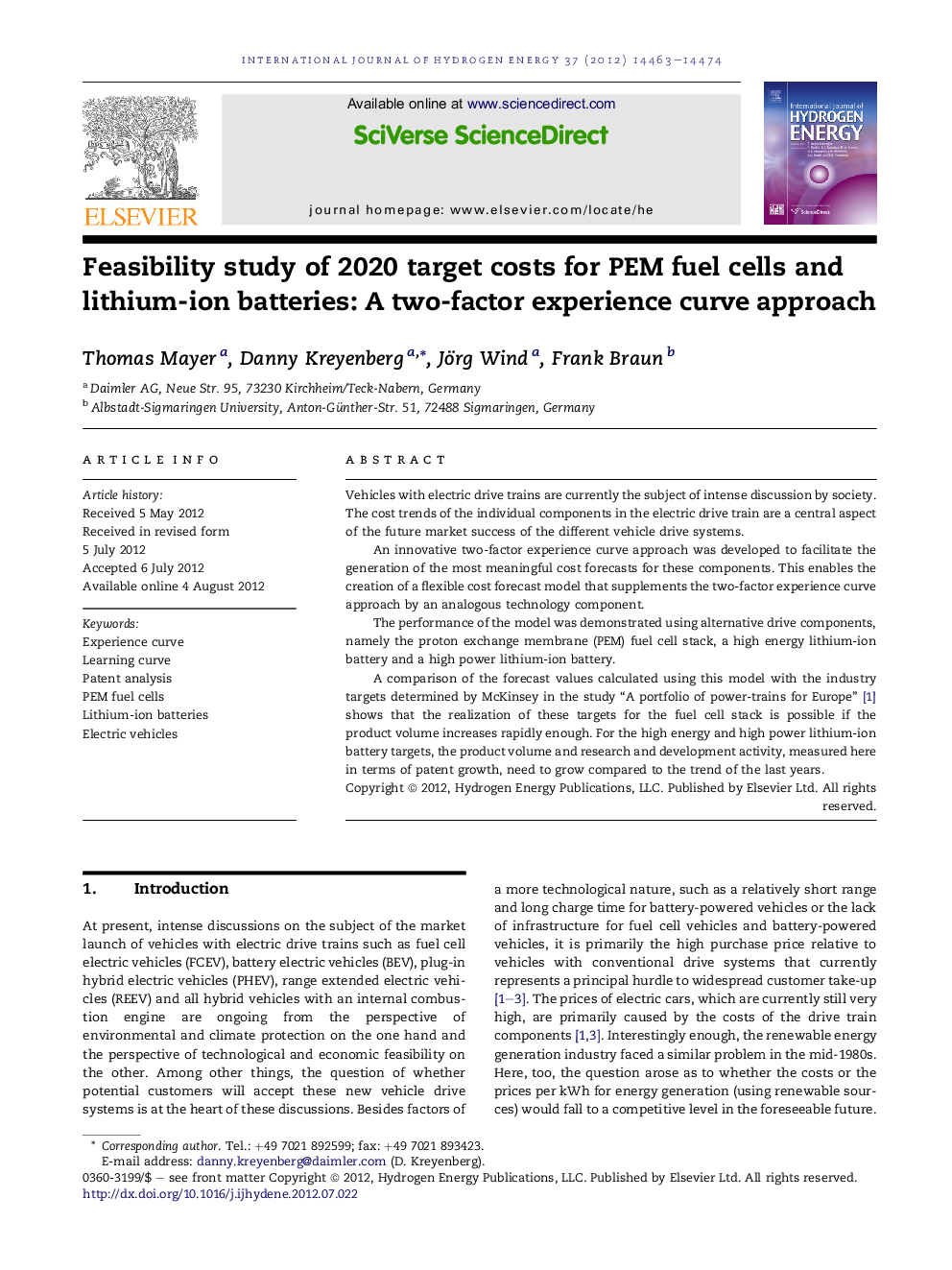| Article ID | Journal | Published Year | Pages | File Type |
|---|---|---|---|---|
| 1274793 | International Journal of Hydrogen Energy | 2012 | 12 Pages |
Vehicles with electric drive trains are currently the subject of intense discussion by society. The cost trends of the individual components in the electric drive train are a central aspect of the future market success of the different vehicle drive systems.An innovative two-factor experience curve approach was developed to facilitate the generation of the most meaningful cost forecasts for these components. This enables the creation of a flexible cost forecast model that supplements the two-factor experience curve approach by an analogous technology component.The performance of the model was demonstrated using alternative drive components, namely the proton exchange membrane (PEM) fuel cell stack, a high energy lithium-ion battery and a high power lithium-ion battery.A comparison of the forecast values calculated using this model with the industry targets determined by McKinsey in the study “A portfolio of power-trains for Europe” [1] shows that the realization of these targets for the fuel cell stack is possible if the product volume increases rapidly enough. For the high energy and high power lithium-ion battery targets, the product volume and research and development activity, measured here in terms of patent growth, need to grow compared to the trend of the last years.
► We developed a new two-factor experience curve approach for our cost forecast model. ► The model endogenous cost degression is driven by output and patent publications. ► For the fuel cell stack, 2020 costs of €36–€49/kW were calculated. ► For high energy Li-ion batteries, 2020 costs of €309–€408/kWh were calculated. ► For high power Li-ion batteries, 2020 costs of €38–€46/kW were calculated.
